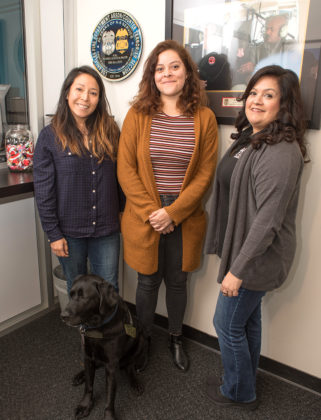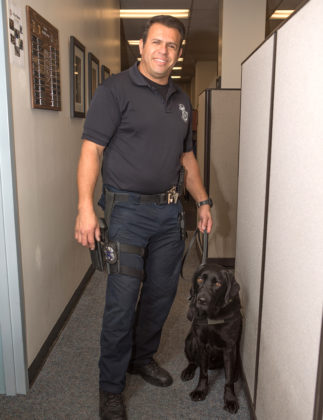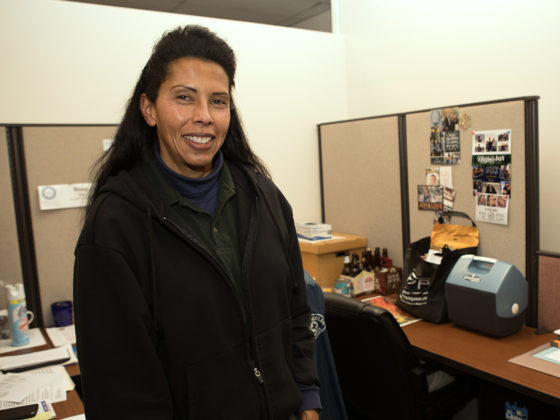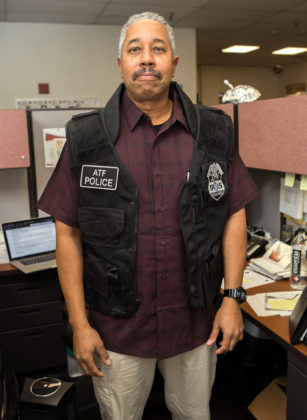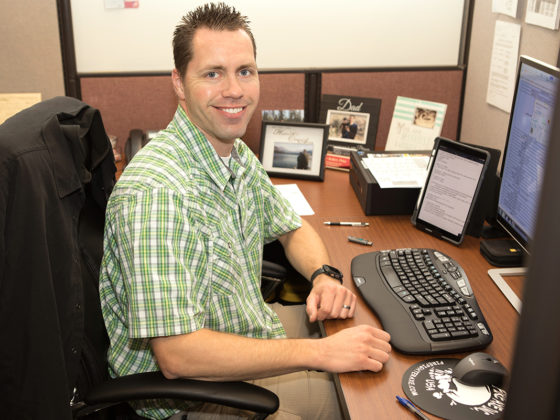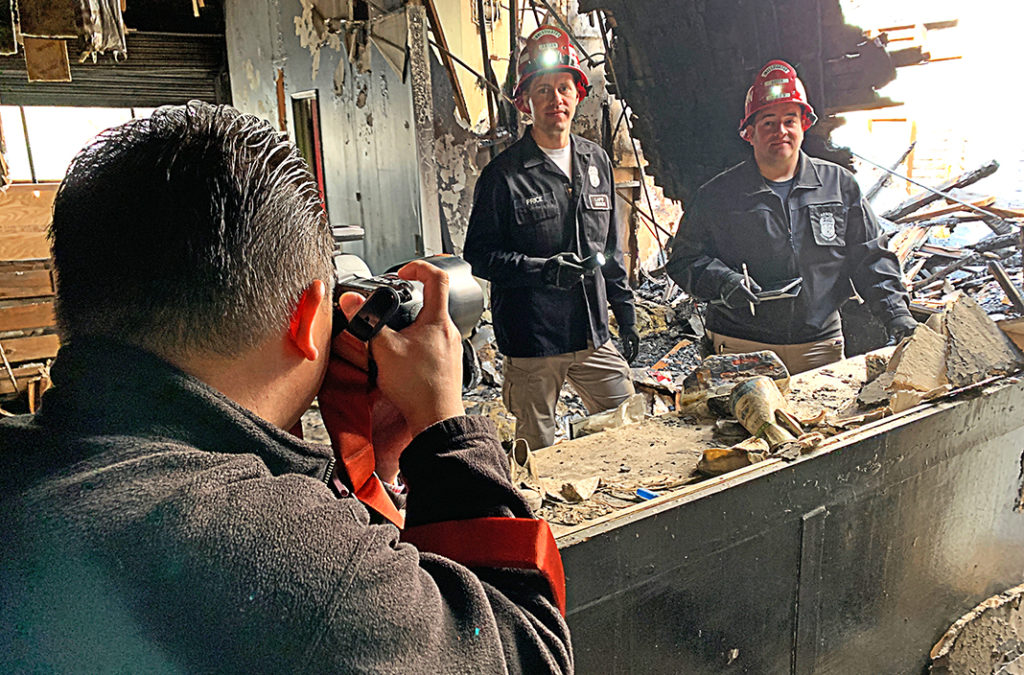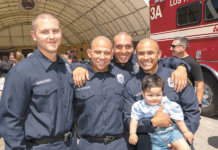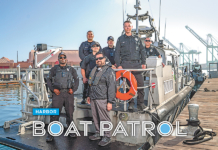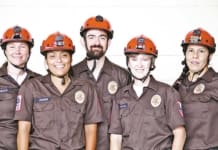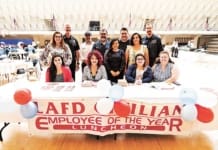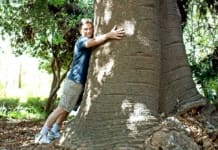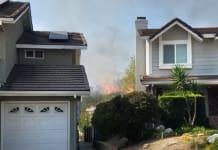LAFD Arson/Counter-Terrorism looks for evidence of crimes after the flames are extinguished.
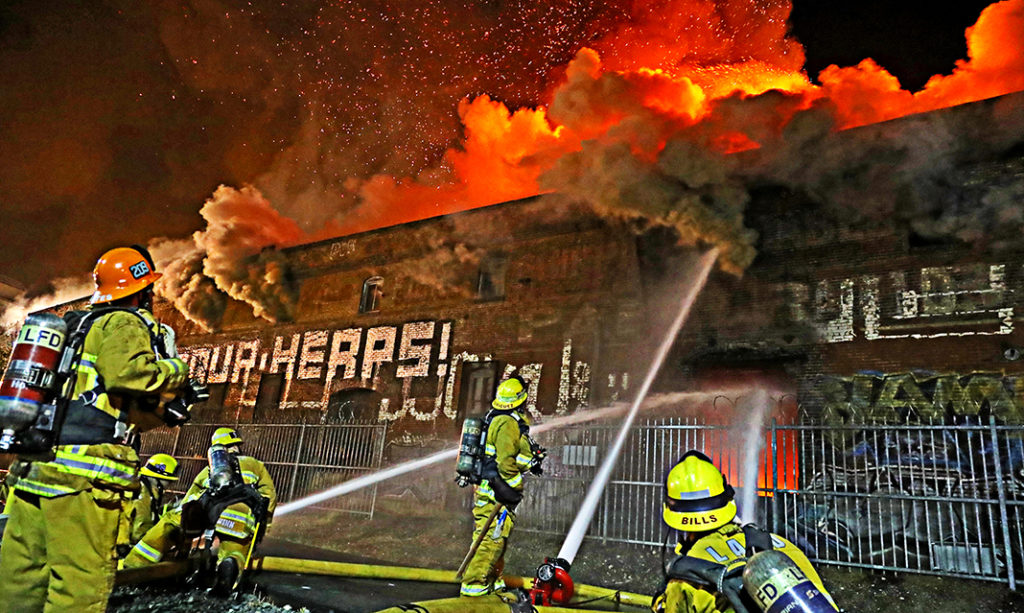
Fires are one of the most serious threats to the City. After they’re out, it’s important to determine how they started. Arson – the intentional setting of a fire to damage or destroy property, or harm or kill a human being, is a serious crime. The section tasked with determining the criminality of a fire is the LAFD’s Arson/Counter-Terrorism Section.
Michael Castillo, 35 years of City service, Club Member, is the Battalion Chief in direct charge of the arson unit.
––– WATCH THE VIDEO –––

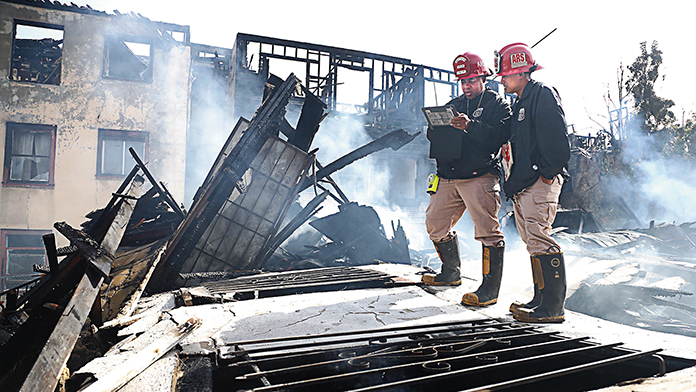
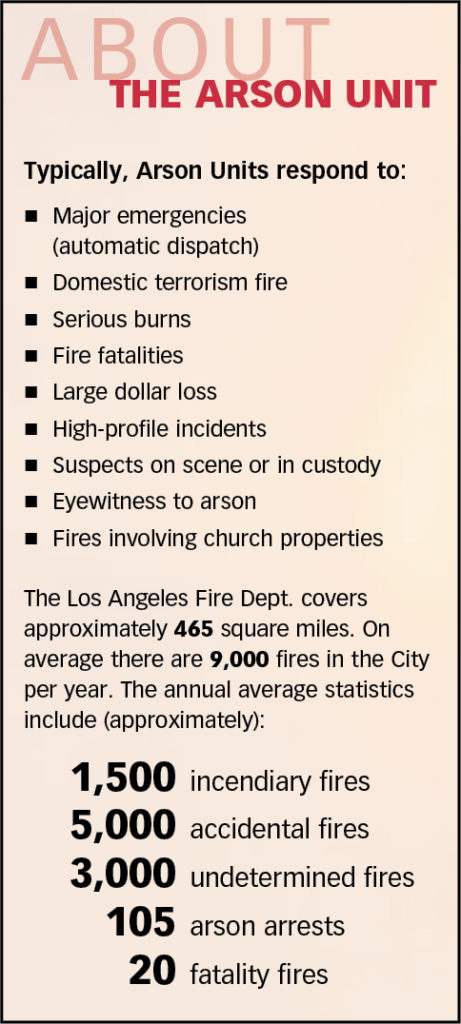 Overview
Overview
The LAFD’s Arson/Counter-Terrorism Section shares the responsibility of fire investigation with line field personnel. This responsibility is granted under authority of the Los Angeles City Charter. The Arson/Counter-Terrorism Section (known as “ACTS”) was originally established in 1918 as the Arson Squad. All Investigators are Peace Officers under 830.37 of the California Penal Code. To maintain law enforcement related skills, Arson Investigators train with LAPD and other allied agencies. Fire Investigation training is received online or through attendance at various seminars, classes, and training conferences.
Organization
The Arson Section is comprised of a Battalion Chief, a Captain II, a Captain I, 18 uniformed investigators (two are detailed to JTTF assignments), and three civilian clerical staff members. Supervisors and special duty arson investigators share on-call responsibilities after hours and on weekends. The on-call members augment the platoon duty investigators at scenes involving fire fatalities, House of Worship fires, domestic terrorism incidents, and other large-scale fires. A unique “member” assigned to ACTS is “Blue,” an accelerant detection K-9 trained by the Federal Bureau of Alcohol, Tobacco and Firearms and Explosives (ATF). Blue and his handler (Investigator Gus Gaeta) are on call 24 hours a day, 365 days per year. The team has assisted local and federal agencies throughout the country as members of the ATF National Response Team. The Accelerant Detective K-9 Program has successfully aided in the prosecution of suspects in several significant fires. Blue’s keen senses have many times outperformed modern day technical equipment.

Mission
The LAFD considers the crime of arson to be the one of the most egregious crimes committed in the City of Los Angeles. The Arson/Counter-Terrorism Section uses all of its resources to investigate and prosecute the responsible parties.
As part of its mission, ACTS also investigates non-criminal fires. This role translates to improving public safety when trends are identified at fire scenes that effect life safety (lack of smoke alarms, for example), or when there are consumer product issues contributing to causing fires. Public safety announcements have been sent through the Department’s social media portals based upon findings by investigators at non-criminal fire scenes.
In 2004, the LAFD Arson Investigation Section expanded to include an active role in Counter-Terrorism. Due to this new role the section was re-named the Arson/Counter-Terrorism Section. The objective of this expanded role is to allow the section to effectively contribute to the LAFD’s Homeland Security responsibilities – to reduce the impact of an event on lives, property and on the local economy. ACTS Investigators are recognized as part of a law enforcement agency by the California Department of Justice. All Arson Investigators are covered under the California Peace Officers Bill of Rights or POBR.
In most cases, the first responders or Incident Commander will have the responsibility in determining the origin and cause at fire scenes. If unable to determine the cause, and assistance is needed, an Arson unit response will be requested.

Arson Programs
Terrorism Liaison Officer Program
Arson Investigators have taken on an additional role of the Terrorism Liaison Officer (TLO). The TLO Program develops and maintains efficient channels of communication between local health, fire, law enforcement and the Joint Regional Intelligence Center relative to terrorist threats and vulnerabilities.
House of Worship Arson Task Force
The Los Angeles House of Worship Arson Task Force was formed in June 1996, by then Battalion Chief Terrance Manning. This Task Force is comprised of members from the LAFD Arson/Counter-Terrorism Section, LAPD Criminal Conspiracy Section, ATF, and FBI. The Task Force investigates all arson and hate-related fires that occur to a House of Worship within the City of Los Angeles.
Los Angeles Arson Terrorism Work Group
The Los Angeles Arson Terrorism Work Group is another Task Force the Arson/Counter-Terrorism Section has been participating in along with the LAPD Anti-Terrorism Division, ATF and FBI. The Task Force was developed following the tragic Sept. 11, 2001 attacks and investigates all arson incidents related to homeland security, domestic terrorism, and eco-terrorism.
LAFD/ATF Arson Task Force
The Arson/Counter-Terrorism Section works closely with the Bureau of Alcohol, Tobacco, Firearms and Explosives (ATF). The LAFD/ATF Arson Task Force has been in effect since Nov. 1, 1984. This Task Force was formed to combat arson fires related to insurance fraud and organized crime, and serial arson and is one of the longest running Task Force (between the two agencies) in the United States. As part of this working relationship, an ATF Special Agent is assigned to the ACTS office, which translates to having direct communication and access to resources from ATF.
Joint Terrorism Task Force (JTTF)
ACTS has two Arson Investigators assigned to the Joint Terrorism Task Forces. Their mission is to investigate acts of terrorism that affect the United States, its interest, property and citizens. JTTF’s exist in multiple cities nationwide with one in each of the FBI’s 56 field offices. A large percentage of the JTTFs are comprised of local law enforcement officers who serve as active participants investigating terrorism. Having Los Angeles City Fire Dept. Arson Investigators imbedded with the JTTF creates a beneficial partnership with multiple federal and state municipalities. Furthermore, this participation improves relationships, maximizes information sharing and, most importantly, enhances the overall situational awareness for policy makers to make the city of Los Angeles a safer environment.
The importance of this involvement cannot be overstressed. The assignment of an Arson Investigator on the JTTF proves beneficial to both the FBI and the Los Angeles Fire Department. As such, the Department has a real-time representative actively engaged in the LOCAL war on terror. An Arson Investigator with street-level experience who is involved in thwarting local terrorist activity brings a unique and dynamic perspective to the investigation. As a result, the FBI in partnership with the Los Angeles Fire Department achieves the goal of detecting and disrupting terrorist networks in a given community. The anticipated outcomes of the Joint Terrorism Task Force involvement include, but are not limited to, the following:
• Los Angeles Fire Dept. Arson Investigators would respond to, and investigate, dynamic issues and or “call outs” that could be worked in a parallel FBI investigation.
• Arson Investigators would be involved with regular Classified and Unclassified intelligence briefings
• Terrorist-related threats and activities within the city of Los Angeles would be identified and documented
• Ownership in the relationship between the FBI and the Los Angeles Fire Dept. would be established; and this is the best common operating picture available concerning any Domestic or International terrorist threats

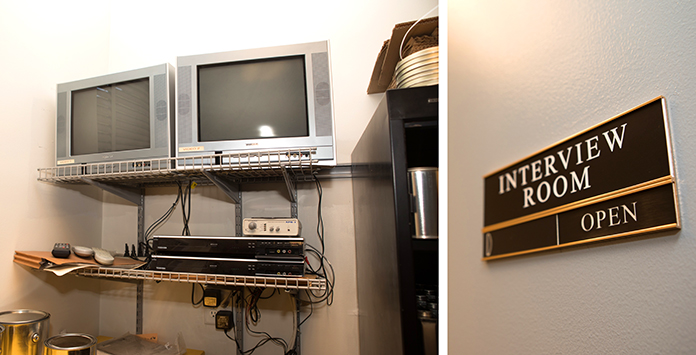
Department/Outside Agency Training
 In addition to the day-to-day investigative activities, ACTS has a significant role in providing fire/arson-related training to LAFD members and others on a continuing basis. Most recently, ACTS conducted training for the Department’s CORE training program, in order to orient soon-to-be appointed Captains to origin and cause investigations and NFIRS. Following that training segment, a Department seminar on “Origin and Cause for the Company Officer” was held over a two-day period. ACTS has provided arson-related OCEP training for all company officers, and informal training is held at fire stations when requested.
In addition to the day-to-day investigative activities, ACTS has a significant role in providing fire/arson-related training to LAFD members and others on a continuing basis. Most recently, ACTS conducted training for the Department’s CORE training program, in order to orient soon-to-be appointed Captains to origin and cause investigations and NFIRS. Following that training segment, a Department seminar on “Origin and Cause for the Company Officer” was held over a two-day period. ACTS has provided arson-related OCEP training for all company officers, and informal training is held at fire stations when requested.
ACTS’ role in training is not restricted to LAFD entities, however. ACTS members provide a block of training at LAPD Homicide School, a one-week course covering various aspects of homicide investigations that is held multiple times per year. Currently, ACTS is assisting LAPD in rewriting its Arson Investigation training bulletin, and ACTS is also working with LAPD Major Crimes in developing arson training for its undercover officers and handlers.
In addition to performing investigative duties, the Arson/Counter-Terrorism Section is responsible for processing and supplying public records to requesting parties. The Section receives approximately 500 requests for Fire Reports per month. The Arson/Counter-Terrorism Section is also the subpoena processing center for the Fire Department. Approximately 300-400 subpoenas are processed monthly for Department members and records.
A Modern Unit
The mission and operations at the Arson Counter/Terrorism Section has evolved into a multi-agency collaboration of expertise and knowledge capable of assisting field personnel in a variety of situations. Response agencies and administrative entities are provided with real time crime scene information. Investigators respond to variety of incidents to investigate fires, determine cause and origin, and make arrests that involve arson suspects.
![]()
The Alive! Interview
On Jan. 8, Alive! editor John Burnes interviewed Battalion Chief Mike Castillo, 35 years of City service, Club Member, and Sr. Arson Investigator Robert McCloud, 23 years, Club Member. Later, Capt. II Scott LaRue joined the conversation. The interview took place in the Arson/Counter-Terrorism Section’s headquarters in the Frank Hotchkin Memorial Training Center near Dodger Stadium

Solving the Fire
Alive!: Thanks for welcoming us! Now Chief, how long have you been assigned to Arson?
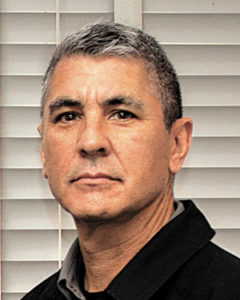
Mike Castillo: I’ve been assigned to this section as the Section Commander for a year and a half.
Great. Robert, talk about how you got to Arson.
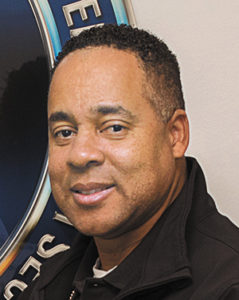
Robert McCLoud: Sure. I started off as a probationary Firefighter with the Fire Dept. I then became a certified Paramedic. Also I was a Dispatcher. I was interested in arson approximately ten years onto the job and started testing and attending a few classes to prepare for the Arson section. I became an arson investigator in 2007, and became the Senior Investigator in 2016.
Very good. And Mike, same question.
Mike: I was hired as a probationary Firefighter at the ripe old age of 19. I rose up through the ranks, became an entry-level Officer – Captain I, then to Captain II, then Battalion Chief. I’ve been an officer for 28 years, a Battalion Chief for approximately 5 years. This position is considered a two-year assignment. I serve at the pleasure of the Fire Chief and the Deputy Chief in charge of Emergency Operations. I requested to be assigned to the Arson section.
Can you give us a brief overview of what Arson/Counter-Terrorism is tasked to do?
Mike: In a nutshell, it’s to investigate all fires in the City of Los Angeles, and if there is a criminal aspect or component, determine the party or parties responsible for causing that crime; and putting together a case for the district attorney to prosecute and ultimately put criminals in jail who cause harm through fire.
You work with the DA directly?
Mike: Sure. When my investigators file a case, they will present it to the DA for filing consideration. Usually 95 percent of the time the case is so rock-solid that the DA will file felony charges. The crime of arson is a felony, not a misdemeanor. We have three DAs who we work exclusively with that are arson/explosive DAs. For fatalities, large-scale incidents, we’ll consult with them, and we meet with them on a weekly basis. They come out to our scenes quite a bit when we have a significant fire scene or fatality. So that’s something that we started about a year ago, having the DA come out to our scene. We are investigating our case from the ground level and building that case for that prosecutor to prosecute, and we have the prosecutor’s input as to how that case should look. It’s kind of unique that we’ve started doing this. We’ve never done it before, and it’s worked out really well.
Arson cases are potentially felonies? There are no misdemeanors here, right?
Mike: Correct, up to the death penalty, life without parole, five-ten-year penalties, things like that.
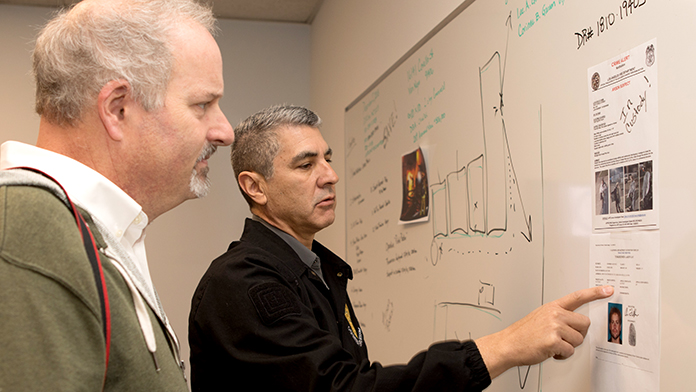
Training
Robert, how does the training differ? What additional training does an arson investigator get from a forensic or a legal standpoint?
Robert: Most of it is on-the-job training, as far as the legal aspects. We try to throw a bunch of cases at new investigators just to get them used to the caseload. In addition to that, as soon as they get something where it’s an arrest where they’re going to have to testify in court, we prep them prior to testifying in court, give them maybe a mock interview or mock trial or something, just to prep them for the questioning and get them ready for the defense attorney’s questions. The first couple of times it’s pretty nerve-racking. It might be a simple case, but just being in front of some individuals, knowing there’s a judge there and there’s someone right in front of you typing every word that you say, it’s a little intimidating the first time.
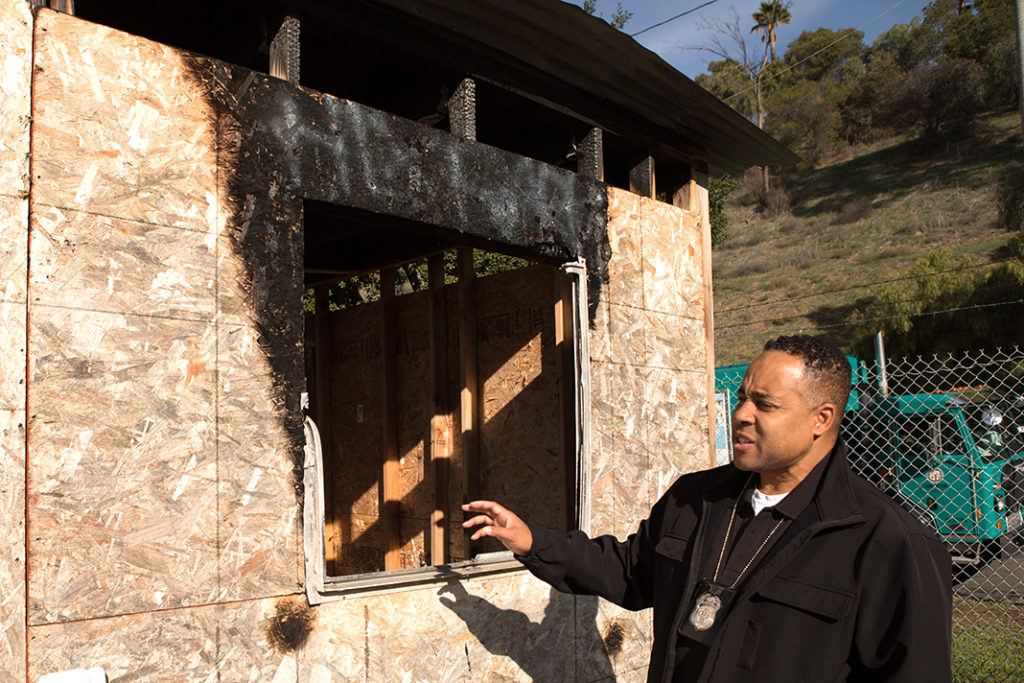
Mike: We take a person who’s been a Firefighter on a fire engine and we basically make them a police detective. Everybody here is required to carry a firearm. You can’t be an arson investigator and say, “I don’t want to carry a gun,” because it’s a safety issue. So they have to get a PC 832, a peace officer’s standard training. They have all the powers to arrest. They have to realize that they have the power to take a life, so not only do they have the responsibility to be a Firefighter and a Fire Investigator and read fire patterns and determine whether a fire was accidental or arson and then put together a case, they also have to think like a Detective, a Police Officer. When they’re interrogating somebody, that person has Miranda rights. We could be possibly putting them away for the rest of their life, so it’s a tremendous responsibility not just in terms of getting it right from, “Is this fire accidental or arson?,” but if I have a suspect now, we have to make sure that that is the right person. We don’t want to prosecute someone who’s innocent, and things like that. We have a good track record. Most of the time my investigators have them dead to rights through physical evidence. Lot of times they get confessions. Robert’s very good about getting people to talk to him, and a lot of times they’ll confess, for whatever reason. We’ll figure out what their motive is, whether it’s anger, money, or whatever. We’ll look at financial records for the possibility of insurance fraud. Or we’ll ask, “Do you have anybody who hates you? Have you upset somebody?” There are intimidation situations.
It’s a tremendous responsibility. When I came here as a Battalion Chief, I went through all the training that an investigator does. I felt it was important. They go through a police background checks, too – polygraphs and financial background checks, because of the tremendous responsibility to put somebody away for life and to take their life with a firearm. People don’t realize the tremendous responsibility the investigators have.
Robert: It’s like starting over.
What percentage of the cases that you present to the DA lead to conviction?
Mike: I’d say about 95 percent.
Robert: Ninety-five percent.
Wow, that’s really good.
The Da Vinci Case
Talk about a favorite case, one that makes you feel that this is a rewarding profession for you, that you have done justice.
Mike: The Da Vinci Apartments fire downtown was a huge one. That required about a two-year investigation.
Robert: Same for me – the Da Vinci fire, downtown Los Angeles.
Major.
Robert: Yes.
Mike: That caused millions and millions of dollars of damage. Luckily nobody was hurt or killed. That individual was probably going to do it again.
The City property next to it housed elderly housing people. They were out of business for a while.
And Animal Services, and the DWP, too.
Mike: Yes.
[The Da Vinci Apartments fire Dec. 8, 2014, destroyed the half-built structure and shattered windows at the nearby headquarters of the city’s Department of Water and Power. The blaze caused between $20 million and $30 million in damage to the Da Vinci complex and an additional $50 million in damage to the DWP building, according to the LAFD. The apartment complex’s owner also suffered approximately $100 million in lost potential revenue as a result of the fire, according to a probation report filed with the court. No one was injured in the fire, which lit up downtown Los Angeles. A man pled no contest to the crime and is in jail. – Ed.]
Robert: We arrived on scene. After the fire was extinguished, you just had this huge, burned-out area, and it was a little overwhelming initially. We had the support of the all the investigators in the office. Again, at that time, the ATF agent assigned to the arson section at the time arrived on scene and said, “Rob, you’re going to need help.” He made a phone call, and we had 40 agents locally and from out of state helping us with the case.
One of the things that we had to do that was time consuming – we dug the place out without any kind of power tools, because we were trying to find an accelerant. We tasked out different responsibilities for looking for surveillance cameras, and a large majority of us spent our days in the rain digging out the scene. We sectioned it off and took photos, and as we layered down – it was four stories, and they had just put drywall in all the units. So when that unit collapsed, we were trying to figure out why the drywall was 15 feet high?
A few days later we finally got down to the ground area, the floor level, and our service dog, Major, hit on certain areas. We collected accelerants from there. The next day we were wrapping things up. We had tasked the guys out to pull video footage. A building directly across the freeway had surveillance cameras. We were able to see a vehicle pull up, and then the individual got out of the car from the side of the freeway and went inside the building. He did that twice. The second time he opened up his trunk. We couldn’t see if he went in with something, but while he was inside, we saw a flash. The day before we had just concluded that an accelerant was used, so now we had this video to back it up. We saw this flash and the guy got in his taxi and drove off. So then we knew we had to find a suspect. It became a long, drawn-out situation trying to identify the car. It was a [Ford] Crown Vic but it looked like a taxi. We hit all the taxi companies. The taxi owners looked at the vehicle and said, “That’s a bandit cab.” We had to pull all the records of every bandit cab that was a Crown Vic that was sold in the last few years.
A bandit, meaning not licensed?
Robert: Yes.
An unlawful taxicab.
Robert: An unlawful taxicab, yes. We investigated that along with the LAPD and ATF – we pulled all those owners and license plate registrations; got all the license plates and dumped them in a database. We then had an analyst from ATF run that with license plate readers around the City in that general area of the Da Vinci, and we came up with two independent bandit cabs that were in that area at the time of the fire. We focused in on those two individuals. We were able to talk to one individual and verified he never made it near the Da Vinci itself. He ended up driving back home in South L.A. The other vehicle – we were able to get his cell phone information as well, using cell phone towers, and that showed him stopping right next to the side of the freeway both times. So then we narrowed in on other cameras on Figueroa, and we were able to see that same taxi get off the freeway and make a left-hand turn onto Figueroa. So we knew who our suspect was. It was a matter of identifying and finding him. I used social media to find this individual, and we found out he was on a plane in Japan. We were just waiting for him to come back.

We talked to Homeland Security at LAX and said, “Let us know when this guy comes back.” When he did return, he didn’t have any clue that we were looking for him, but they did seize all of his devices– his laptops, his cell phones. With LAPD’s cooperation, we decided that he was the individual we wanted to arrest, so we did.
He didn’t really want to talk. Another LAPD detective and I sat and talked with him. However, after so many months of sitting in jail, he decided to take a 15-year deal. But he never admitted guilt. He pled no contest.
Mike: There are other rewarding cases, too – ones that we’ve had in the last couple months, even. We’ll get a call for a car fire. Our Captain will call us out at three in the morning, and there was fire damage done to the car of a significant other who was having problems with an ex-boy, ex-girlfriend, spouse or significant other, and they were terrified that their house was going to be next. My investigators went out there, they started canvassing to see if there were any leads, to look at video surveillance and start putting together a case. When they build a case, that brings enormous relief to that crime victim. Nothing’s more terrified than having your property burned.
I can’t imagine.
Mike: A business owner who’s worked in L.A. for 30 years, who put his heart and soul into his business, he loses a business to fire. He wants to know, “Was that accidental? Is someone trying to put me out of business?”
It’s scary that you’re targeted.
Mike: Right. If we can determine that it’s accidental, then they realize, “Okay, it’s unfortunate I lost my business, but at least I know someone’s not out to kill me or my family.” Those are the really rewarding things.
Rob, what did you find rewarding about the Da Vinci case?
Robert: It was a construction site, with a large number of employees who were out of a job for Christmas. There was damage to the City and to private property, but there were at least 100 to 200 individuals out of work. It was rewarding just knowing that at least there was some satisfaction of catching the person responsible for that.
Was that your most complicated investigation?
Robert: I would say yes. We traveled to Saipan, Hawaii, Oakland and Texas interviewing people. After the suspect was in custody, that’s when the investigation really kicked off because we wanted to talk to everyone we saw on social media with whom he associated after the fire to see if he bragged about it or talked about it. We were able to find an individual who, through another individual, said, “Yes, he was at a party. He was intoxicated, but he did say, ‘That’s why I set that apartment building on fire.’” I asked this individual, “Why would he burn an apartment complex?” He says, “He was upset because of the African American kids who were killed.” We knew it.
Is arson a crime of passion?
Robert: It can be. There are several other reasons like financial gain. Sexual.
Mike: Hate, spite, revenge. Revenge is a big one.
A Serious Crime
Tell us something that people don’t know about arson investigations.
Robert: I think one of the things is the Molotov cocktail. A lot of guys will construct this thing, not knowing that it has now been deemed a terrorist device. It’s a serious offense if you’re caught with that in your car. If you’re just making it your backyard and say, “Hey, let’s just do this” – it’s considered a terrorist device. I don’t think the masses know that.
I knew it was very dangerous and certainly criminal but I didn’t know that it was terrorist.
Mike: There’s a misconception about arson – it’s a serious crime. It’s a felony. Let’s say you light a fire just to scare someone away and you kill that person, you could eventually get the death penalty or life without parole. I don’t think people realize how serious arson is.
Is that why arson investigations are now considered counter-terrorism?
Scott La Rue: For us, we’ve added personnel who are embedded into certain law enforcement agencies that provide that counter-terrorism intelligence back to the Fire Dept., and in return they get an investigator who is qualified in arson. So if anything in the region should pop up, those law enforcement agencies have one of us embedded with them, and then vice versa. That intel can be fed back to us at the Fire Dept.
Scott: And most people think that’s international, but it could be domestic terrorism.
A Passion
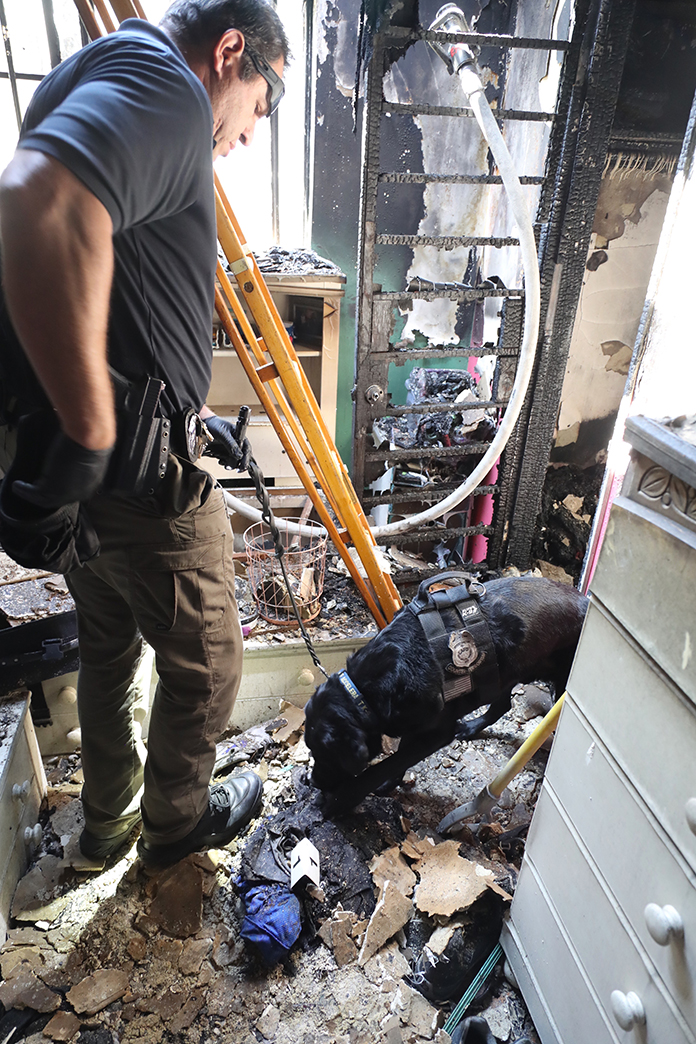
What do you love about this line of work?
Robert: The challenge of solving the puzzle. It’s kind of like an addiction. My best skill is I like talking to people in interviews, or just trying to get them to open up to me. A lot of investigators will ask me to come along with an interview and see if I can get this person to talk. Sometimes that person is a suspect, sometimes a victim.
Do you solve puzzles in your off time?
Robert: I do not, no.
Mike: For me, the end result is if somebody has caused somebody harm by using fire, then that person needs to be taken off the street. About a year ago, when I first got in this section, we had a person, a drug addict, in the North Hollywood area. She was going around lighting fires – trees on fire, and she burned a house down. People were terrified. They were calling my office, saying, “What are you doing for this?” We were out there doing surveillance, trying to find this person. Finally that person was arrested in about a week’s time, and she’s now going to be in jail and she won’t be lighting fires anymore.
What are you most proud of?
Mike: The work ethic here. They’re like dogs with bones. They won’t give up until they find somebody. It’s frustrating when you know a fire’s arson but you don’t have a suspect, or if you have a suspect, you can’t get them for whatever reason. But I’m proud of the work ethic here. That’s why I wanted to come here as the chief officer. If I ask these people to stay all night long to solve a case, they will.
Our workload is going up, but our staffing is not increasing with the workload. That’s just the budgetary times that we’re in. My investigators do a valuable job putting arsonists away. We take someone off the street and may save literally millions and millions of dollars in property losses and lives lost. We’re asking for more staffing. We’re trying to be innovative and unique. We’re asking for federal grant funds, but so is everybody else. We’re fighting for the same dollar.
Right. Thank you for the interview and the tour.
Mike: You’re welcome.
…BEHIND THE SCENES
Summy Lam, Club Director of Marketing (foreground), photographs Arson Investigators (from left) Bob Price, 13 years of City service; and Angel Alvarez, 17 years. |



